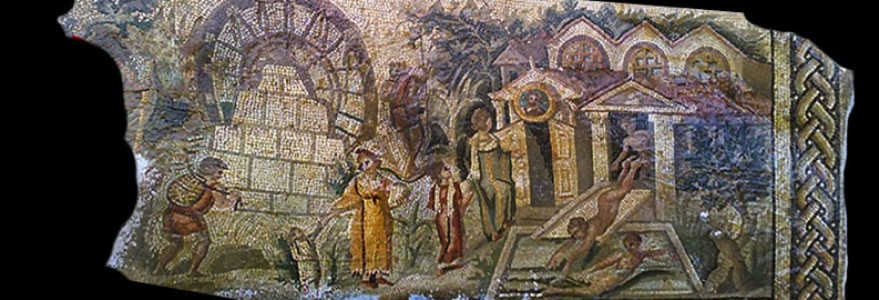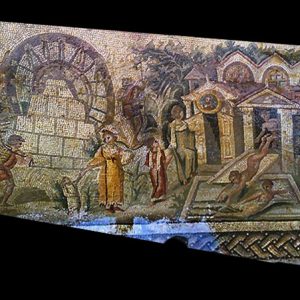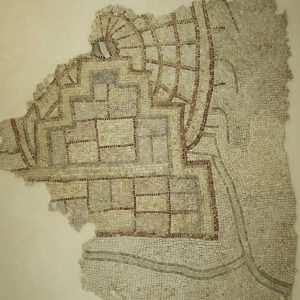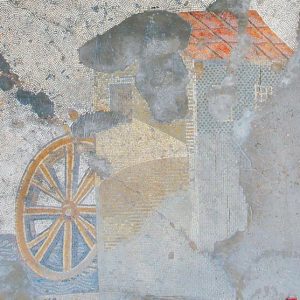Recent studies conducted by researchers from the Faculty of Archeology at the University of Warsaw contributed to a discovery of particular importance. On the famous figural mosaic, a huge hydraulic wheel was discerned. According to Prof. Marek T. Olszewski, it is currently known as the oldest representation of a noria.
In the research conducted at the Faculty of Archeology of the University of Warsaw, in cooperation with the Directorate General of Antiquities and Museums (DGAM) in Damascus, regarding stolen mosaics from the archaeological sites in Syria a huge hydraulic wheel (noria) was identified on the lowest strip of a figural mosaic, dated to the first half of the 4th century AD, or perhaps to Constantinian time (306-337 CE). According to Prof. Marek T. Olszewski from the Faculty of Archeology of the University of Warsaw, this representation of a noria – is about 150 years older than the previously known mosaic representation, also discovered at Apamea.
After the 3rd – 2nd century BCE, hydraulic wheels were widely in use, not only in the Roman East, especially along the Orontes and Euphrates valleys, but also in the Roman provinces of Europe. These water wheels were used for irrigation of fields and gardens and as well as for supplying fountains, thermal baths, and houses with running water. The widespread use of the noria is associated with dynamic economic development, the abundance of alimentation, and the rapid enrichment of the population of these regions. The name noria is of Semitic origin (Syriac and Arabic), meaning water wheel which was used by the Semitic population for a long time, up to modern time (e.g. in Syria it was still in use during the first half of the 20th century), until the introduction of mechanical hydraulic pumps operated by an oil motor.
The noria depicted on the Apamea mosaic is made of a wooden wheel positioned vertically and installed on a very solid pyramidal stone structure. The hydraulic wheel drew water from the Orontes River and supplied it to small Roman baths with swimming pools and a slide, visible from both the outside and the inside; the water slide and the swimming pool were sorts of attraction for boys playing together – says Prof. Olszewski. The water wheels were operated by the river current, then turned round and used to lift a large amount of water drawn from the river, on a regular and cyclical basis. The water then was poured from the wooden compartments or the ceramic pots into the canal of the aqueduct up to 16 m above (in the mosaic the aqueduct is located in the background and thus is invisible), gradually flowing to the fields, gardens, or to the city’s individual public buildings, to the villas, and private houses.
As Prof. Olszewski claims, the iconographic sources illustrating the noria in the Greco-Roman antiquity are few. To date, the only known example of a noria is the mosaic from Apamea discovered by Belgian researchers (some 85 years ago), dated to AD 469, which decorated the portico of the city’s famous monumental Cardo Maximus Street.
The hydraulic wheels spread to European Roman provinces such as Italia, Dalmatia, Gaul, and Iberia, as documented in literary sources and confirmed by archaeological evidence. In fact, from the 7th century onward, this technology was adopted by the Middle East Arab civilization and then transferred to the conquered Spain and from there to Morocco.
Various types of irrigating systems were known in the Greco-Roman world. They were generally operated by humans power, but also by animals (oxen, donkeys, dromedaries), as represented in the tomb fresco from Alexandria, depicting the so-called sekiyah, a vertical hydraulic wheel, pulled by two oxen and used for irrigation (its exact date is undetermined; the 2nd century BC to the 3rd century AD).






